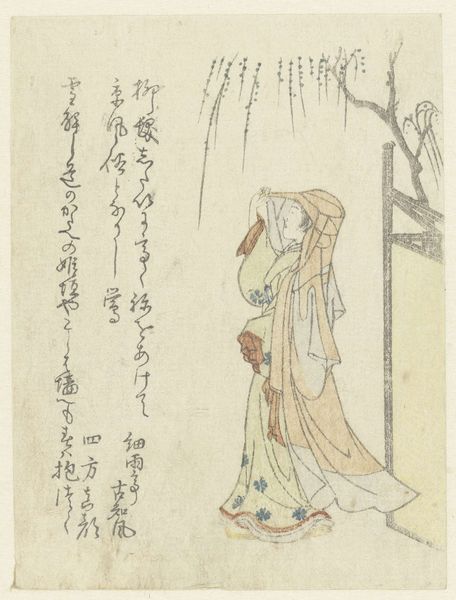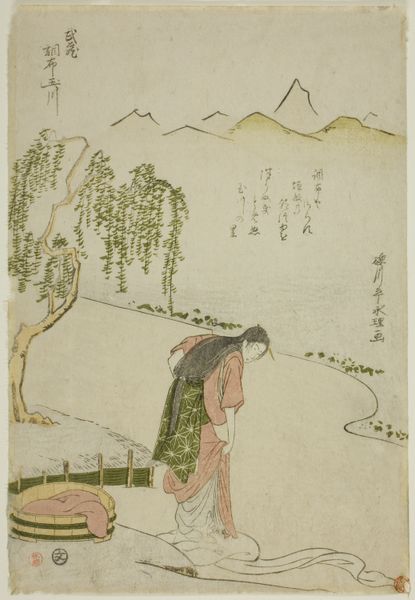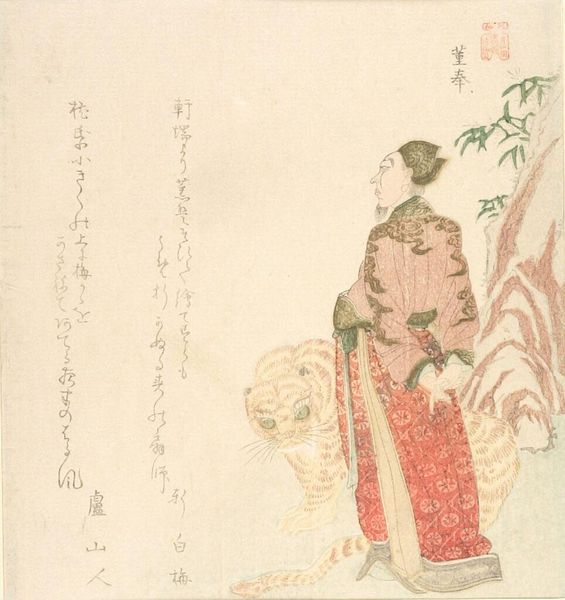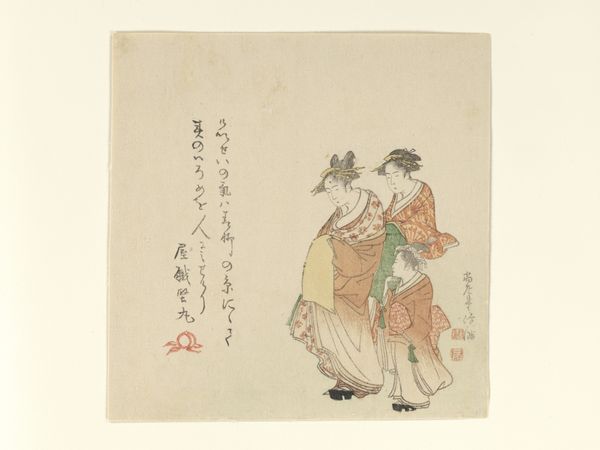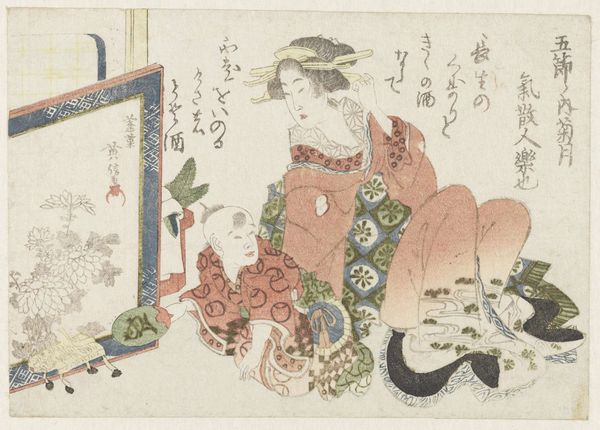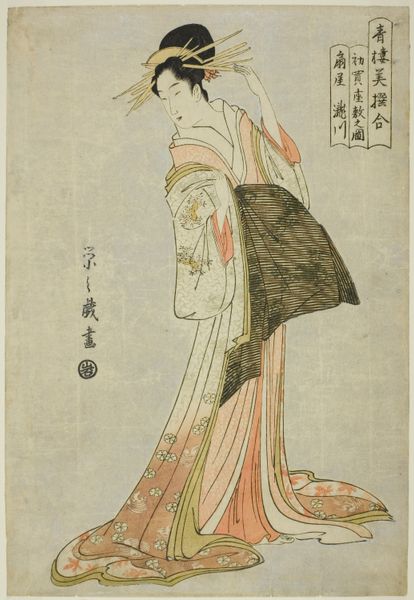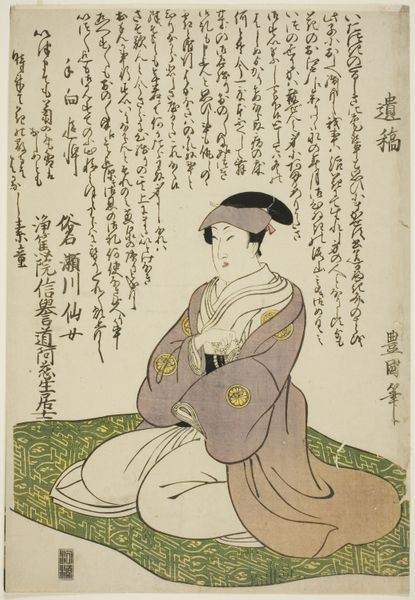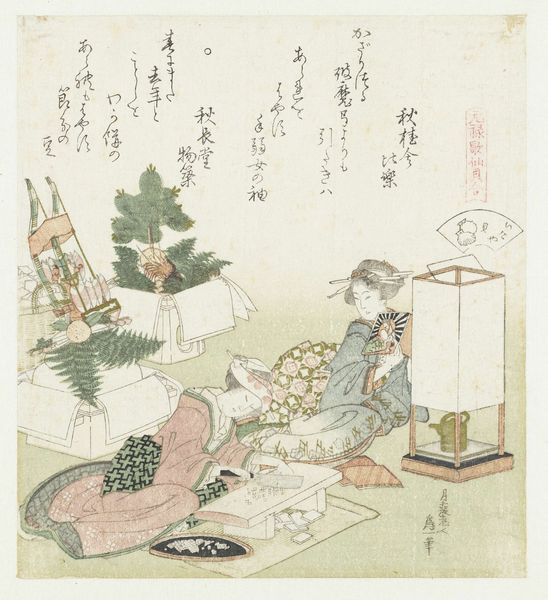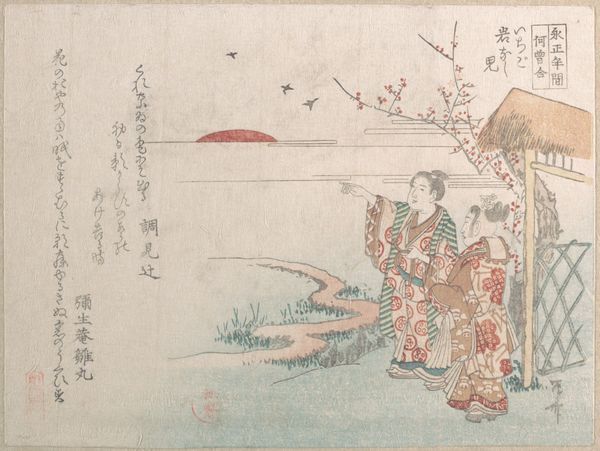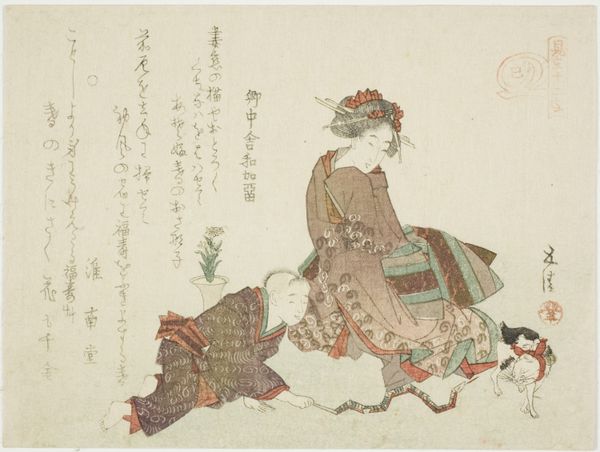
print, woodblock-print
#
portrait
# print
#
asian-art
#
landscape
#
ukiyo-e
#
figuration
#
woodblock-print
Dimensions: height 138 mm, width 183 mm
Copyright: Rijks Museum: Open Domain
Curator: Katsushika Hokutai’s “A Woman Among Young Pines,” dating circa 1800-1805, immediately strikes one with its understated elegance. As a woodblock print, it's remarkable in its detail and subdued palette. Editor: Yes, I immediately note the tranquil and serene mood established by the soft hues. The composition—a figure positioned amidst rolling hills dotted with pine trees—creates an almost meditative effect. Curator: This piece exemplifies Ukiyo-e traditions by subtly exploring the ephemeral nature of beauty and the pleasures of daily life through its representation of a female figure—likely an urban woman from Edo. Note that she's not necessarily a representation of reality but is designed to present a contemporary ideal, reflecting the desires and projections of a specific consumer culture. Editor: Absolutely, and analyzing the formal elements, we see the expert handling of line to define form, from the gentle slope of the hills to the intricate patterns on the woman’s kimono. It's fascinating how such delicate linework can create such a strong sense of space and depth. I'm also observing how color is strategically deployed to accentuate certain details without overwhelming the composition as a whole. Curator: That’s precisely what makes this art historical context critical! Consider the status dynamics; a patron of this kind of work certainly was someone who sought to engage in contemporary narratives surrounding identity and gender through the art that they bought. What can the setting among young pines suggest about this female subject? Does this provide her with new roots, a symbol for resilience and enduring vitality? Editor: Intriguing question! Formally speaking, though, I see a strong counterpoint between the geometric patterning on her robe and the more organic forms of the landscape, suggesting an artificial imposition upon nature; something man-made versus the organic proliferation of nature, further reinforced by the clear hierarchy created, drawing all focus to the robe's color scheme, its texture and linear detail. Curator: A point well-taken! To step back and look more holistically, though, “A Woman Among Young Pines” transcends a pretty landscape piece to prompt larger conversations about class, environment, and perhaps the constraints of the Edo society. Editor: Indeed, through careful visual analysis alongside considerations about cultural and historical elements, there's truly depth here. Curator: A conversation we can explore together in future viewings!
Comments
No comments
Be the first to comment and join the conversation on the ultimate creative platform.
